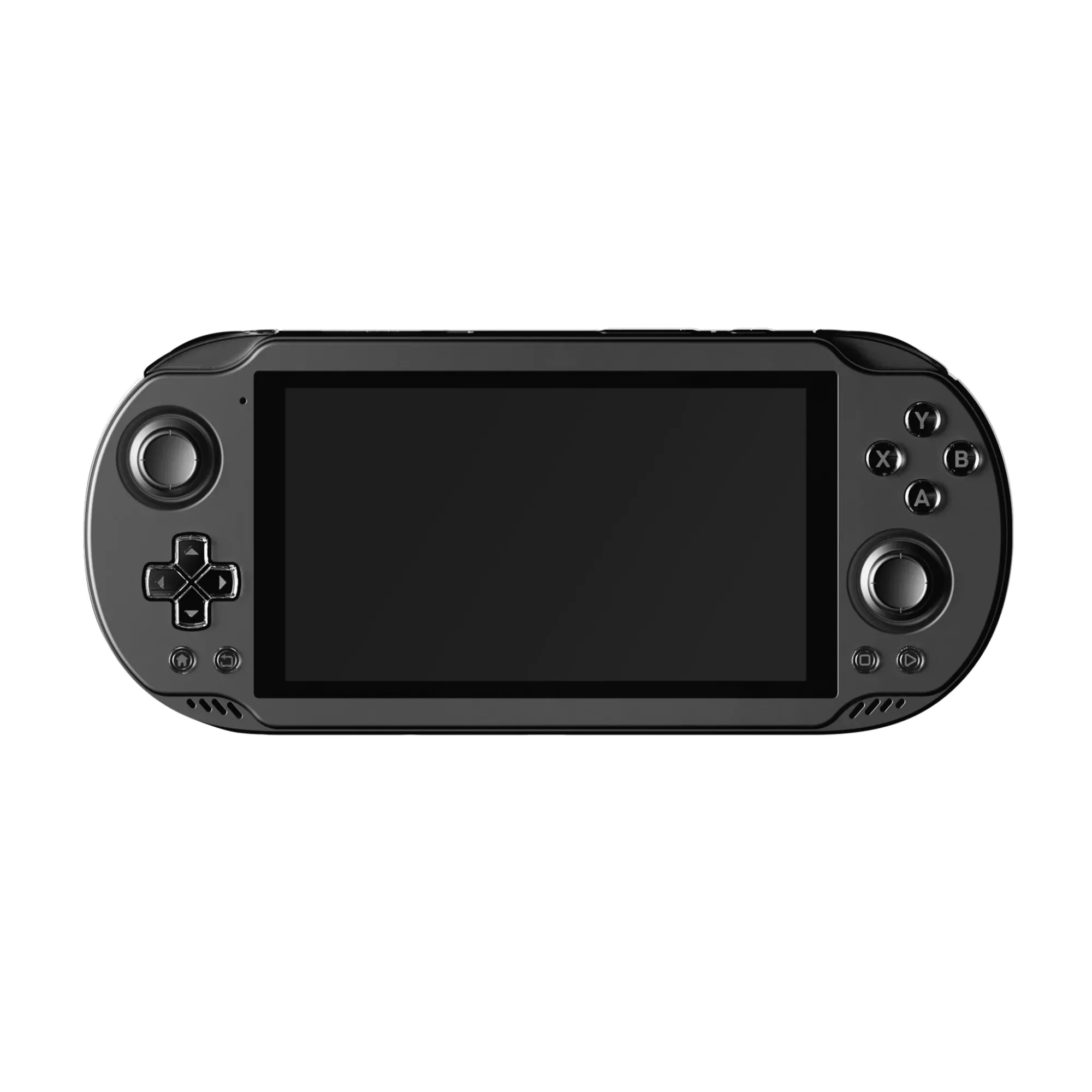The AYN Odin2 Mini is a PS Vita lookalike with a beautiful design, and powerful hardware, but it comes with a few caveats.
The Odin2 Mini is the latest Android-based handheld by manufacturer AYN. This device is currently seeing plenty of hype across the handheld scene because its predecessor — or, let’s rather say, its bigger sibling — the Odin2 — is considered by many to be one of, if not the best, emulation handhelds currently on the market.
So, the Odin2 Mini has quite a legacy to live up to, and after using it for the last week or so, I think it might just have pulled it off perfectly — except for maybe a few minor things. Let me explain!
Clear Inspiration
From the moment you first hold the Odin2 Mini in your hand, you know where AYN got its inspiration from. It is so incredibly obvious how much this looks like a PS Vita. Also, there are two colour options: black and white.
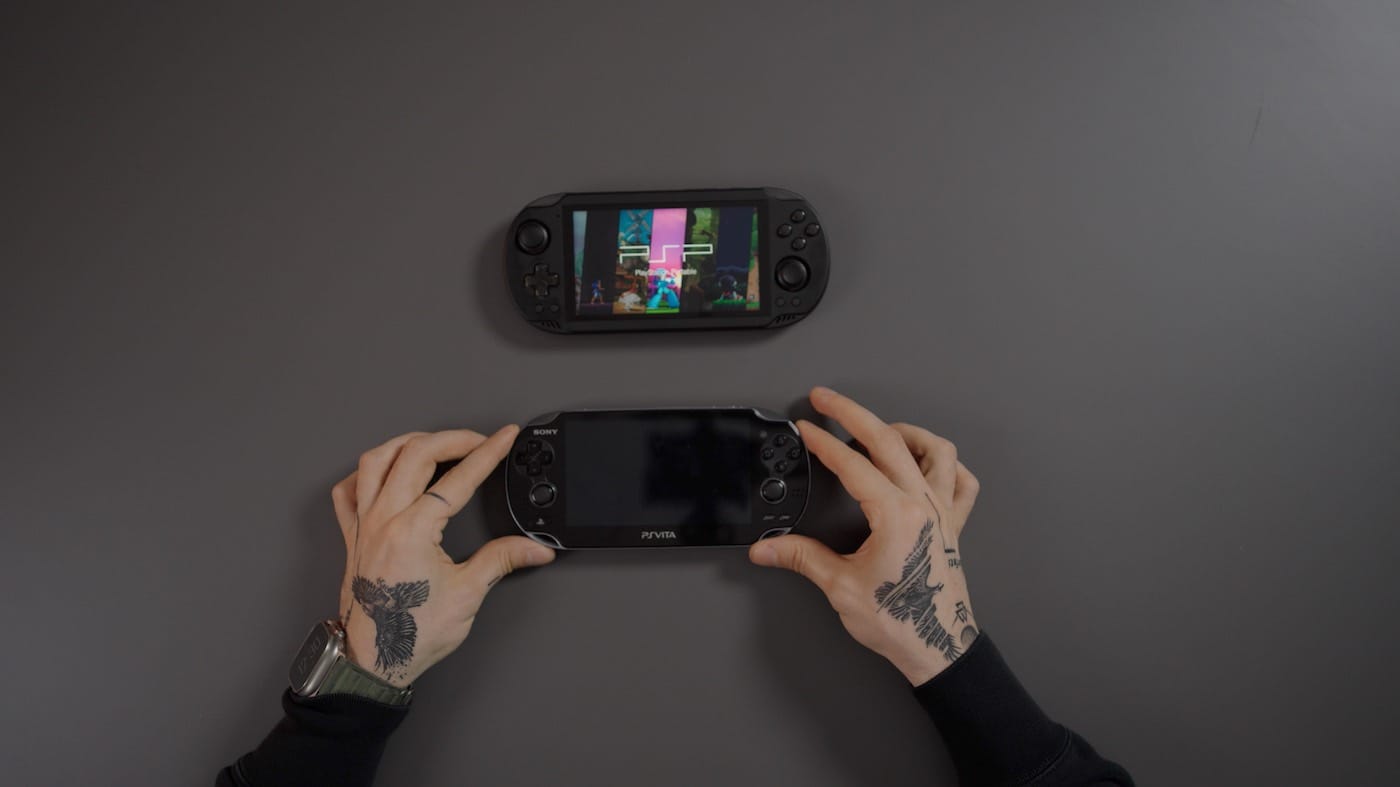
On the front, the D-pad and buttons look very similar, only that the Odin2 Mini AYN used ABXY buttons, while on the Vita, you have the famous Sony shape buttons. AYN also went more for an Xbox-style layout of analogue sticks since they are offset. In every app, like PPSSPP for PSP emulation, the Mini's controllers are recognized automatically as an Xbox controller.
All these input methods are great. While the sticks are maybe a tad smaller than what I’m usually used to, they don’t feel as hard to use as the recently reviewed Flip KB. The buttons and the D-Pad are also great, and while I still suck at fighting games, I don’t think you'll have any problems pulling off your Hadoukens or Shoryukens or whatever other attack you like.
Back to the design: AYN also decided to opt for front-facing speakers, whereas, on the Vita, you had little insertions for loops or straps (see image below). By the way, plus points for front-facing speakers. While you won’t use this device as a ghetto blaster (do people even still know what that is?!), it’s good enough for playing video games on the couch without the need to wear headphones.
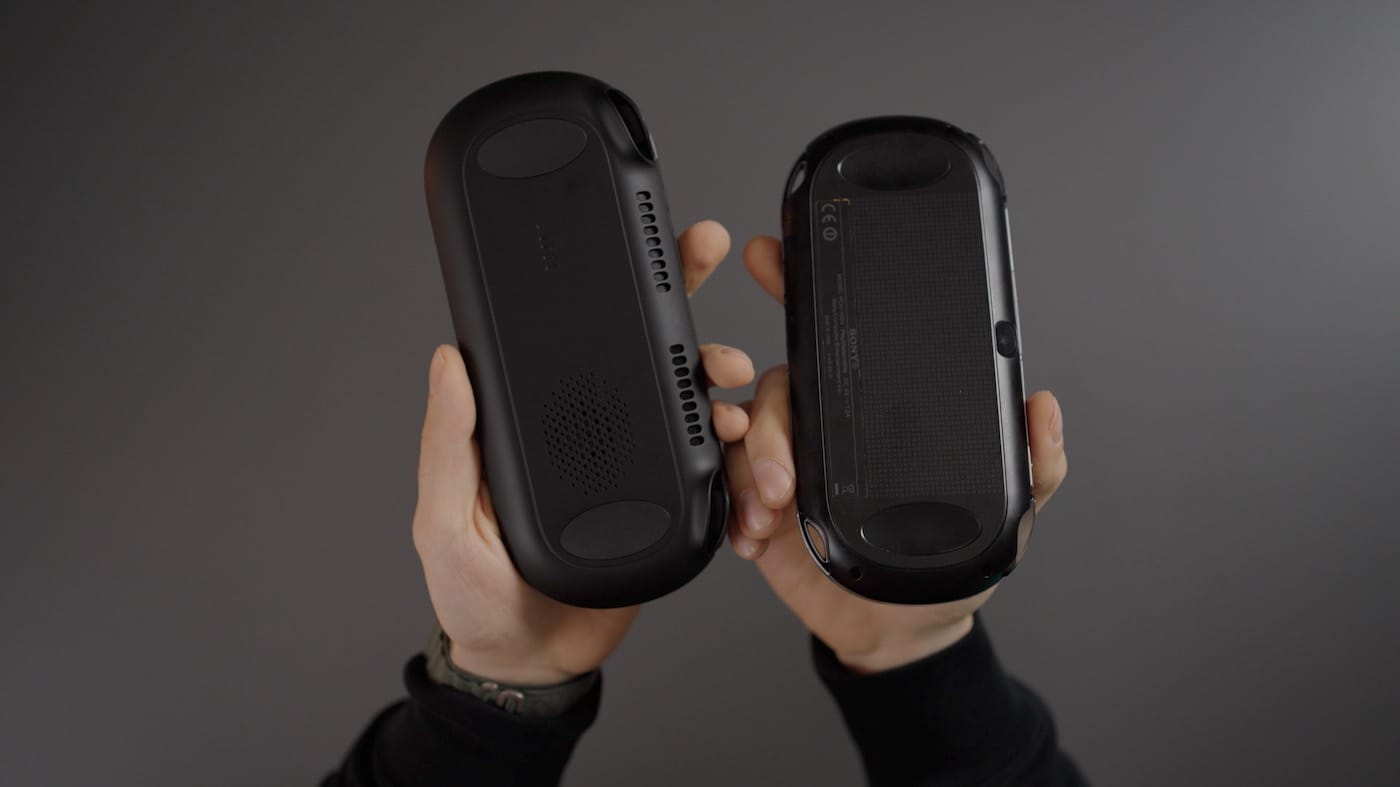
When turning the device to the back, the similarities remain but are less obvious. Both devices still have indentations at each end, but on the Vita, you have a touchpad in the middle, while on the Odin2 Mini, you have the outlet for the built-in fan. You can hear it at times depending on how much you stress the Snapdragon 8Gen2 in this device, but more about that chip later.
This is also something of a hotspot for the device.
The similarities end on the bottom and top since AYN used a different button choice and layout. Here, you have a power button, volume buttons, a microSD card slot, and a micro-HDMI plug, while on the bottom, you have a USB-C slot and a headphone jack.
Size and weight-wise, the Odin2 Mini is larger, thicker, and heavier. It weighs 320 grams, compared to the Vita’s 260 grams.
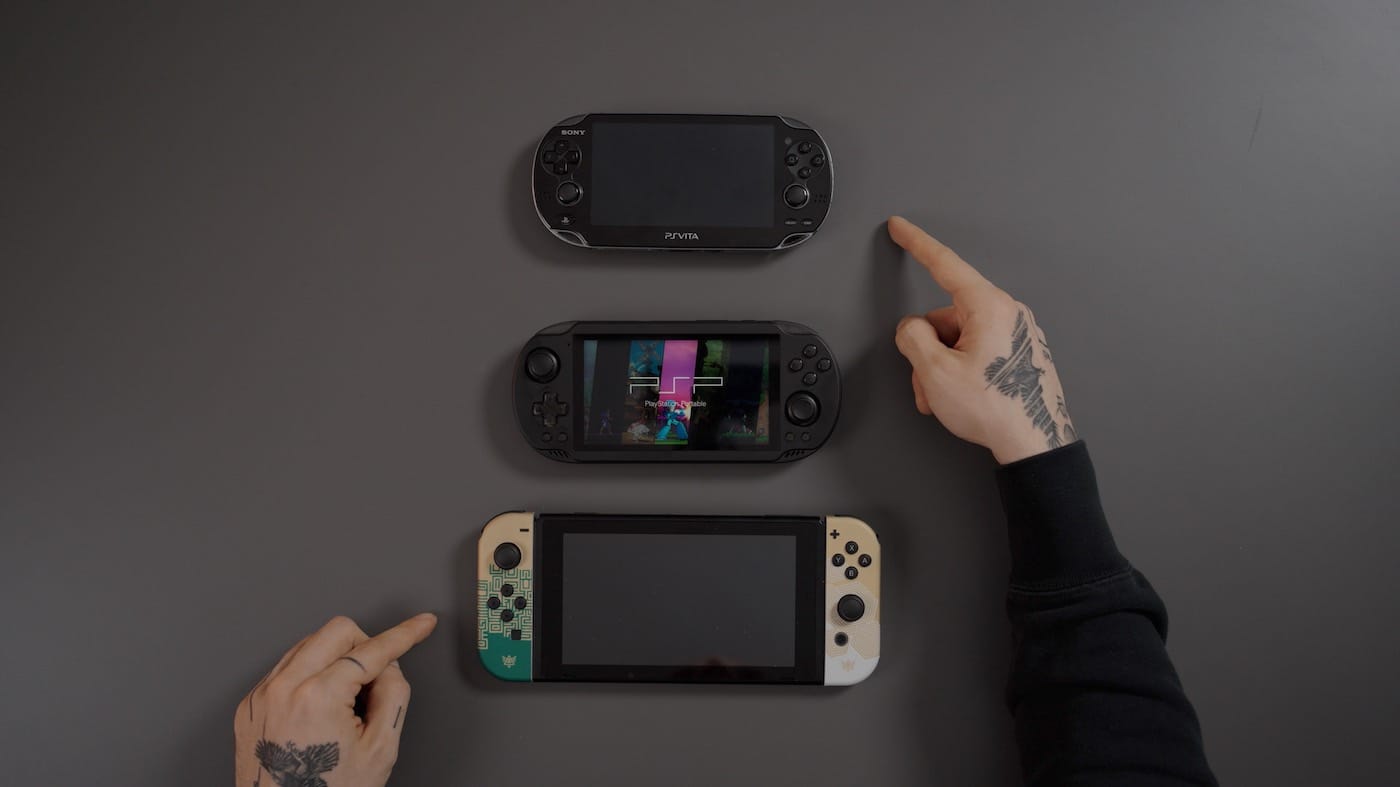
However, it is still a small device. Compared to, for example, the Vita and the OG Nintendo Switch, it is right in the middle (see above). Compared to the ROG Ally or the Steam Deck, the Odin2 Mini just looks tiny.
It technically fits in your pant pockets, depending on the pants, and it’s small enough that I stick it in a Switch case and bring it with me. However, I’m still looking for a dedicated case since every Switch case is still too large, and I might just have to look at what’s still available for PS Vita. If you have a recommendation, please do comment below.
So, design-wise, on the one hand, I find it kind of blunt that AYN basically just stole the design of the Vita, but on the other hand, the Vita is one of my favourite handhelds ever, and I adore what it looks like, so I obviously also love what the Mini looks like. So honestly, despite my bias, I think they’ve nailed it.
Top Notch Performance
The Odin2 Mini uses the Snapdragon 8Gen2, which is the same chip used in the Odin2. That chip is the reason why the Odin2 is so popular. It’s well supported by different apps, it's performant enough to emulate everything I threw at it, and there are even drivers available to make it run even better in different emulators like Yuzu for the Nintendo Switch and Vita3k for the PS Vita.
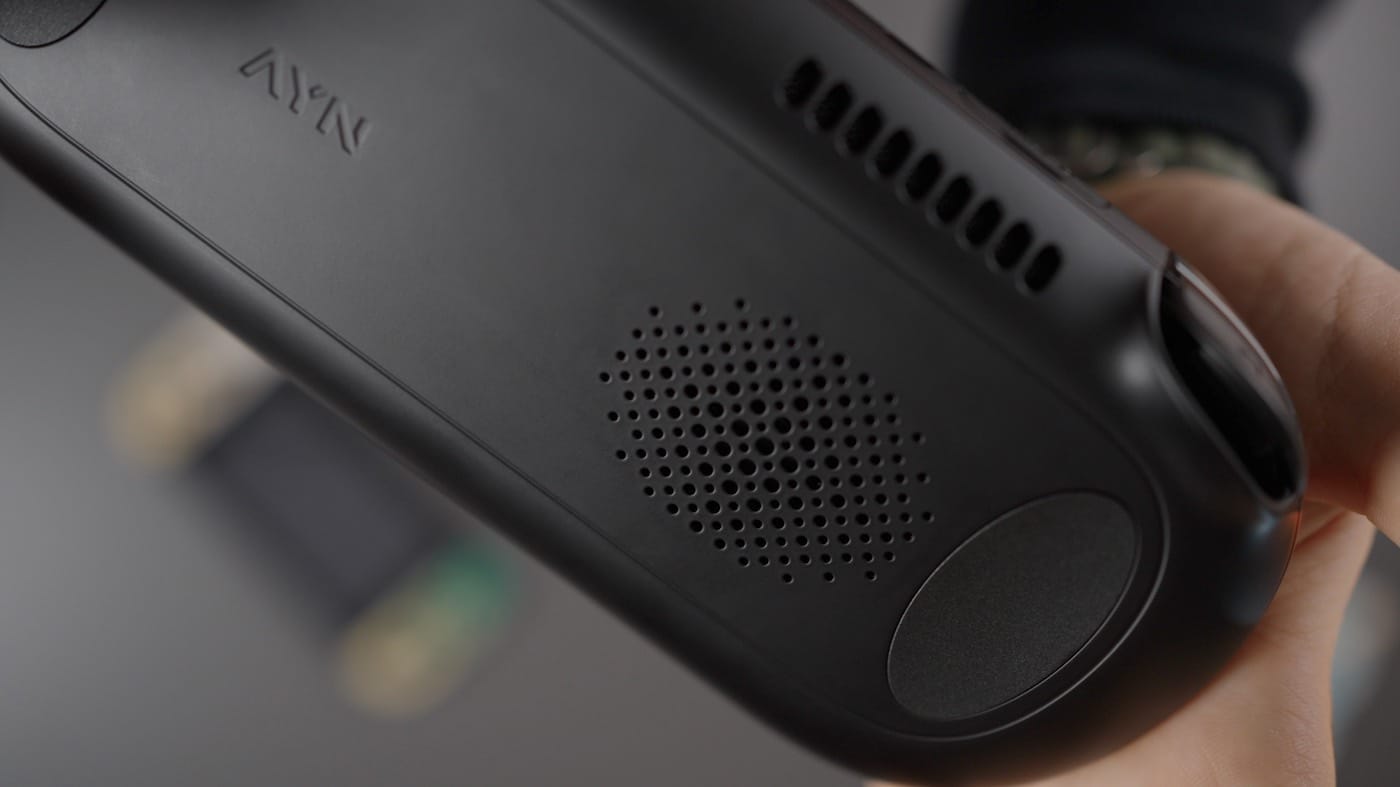
The Odin2 Mini comes in two different versions: the base model has 8 gigs of memory and 128GB of storage, and the Pro model (which we're testing) has 12 gigabytes of memory and 256 gigabytes of storage. Both versions cost $339 and $399, respectively, which is honestly a steep price, considering the Odin2 is currently at just $299.
Also, from other Odin2 reviews, I know that 8 gigs are enough for most use cases, and you can simply expand storage with a microSD card like the 512 gigabyte one I use.
The Mini comes with a MiniLED screen. While that isn’t as good as an OLED screen, it is still much better than any old IPS LCD screen used in many of these devices. It is better than the screen in the Odin2.
Thanks to its screen, it has a contrast ratio of 1 million to 1, it has 155% sRGB coverage, and it has 385 dimming zones. But if all I just said sounded like Klingon to you, just know this: it’s a damn fine screen.
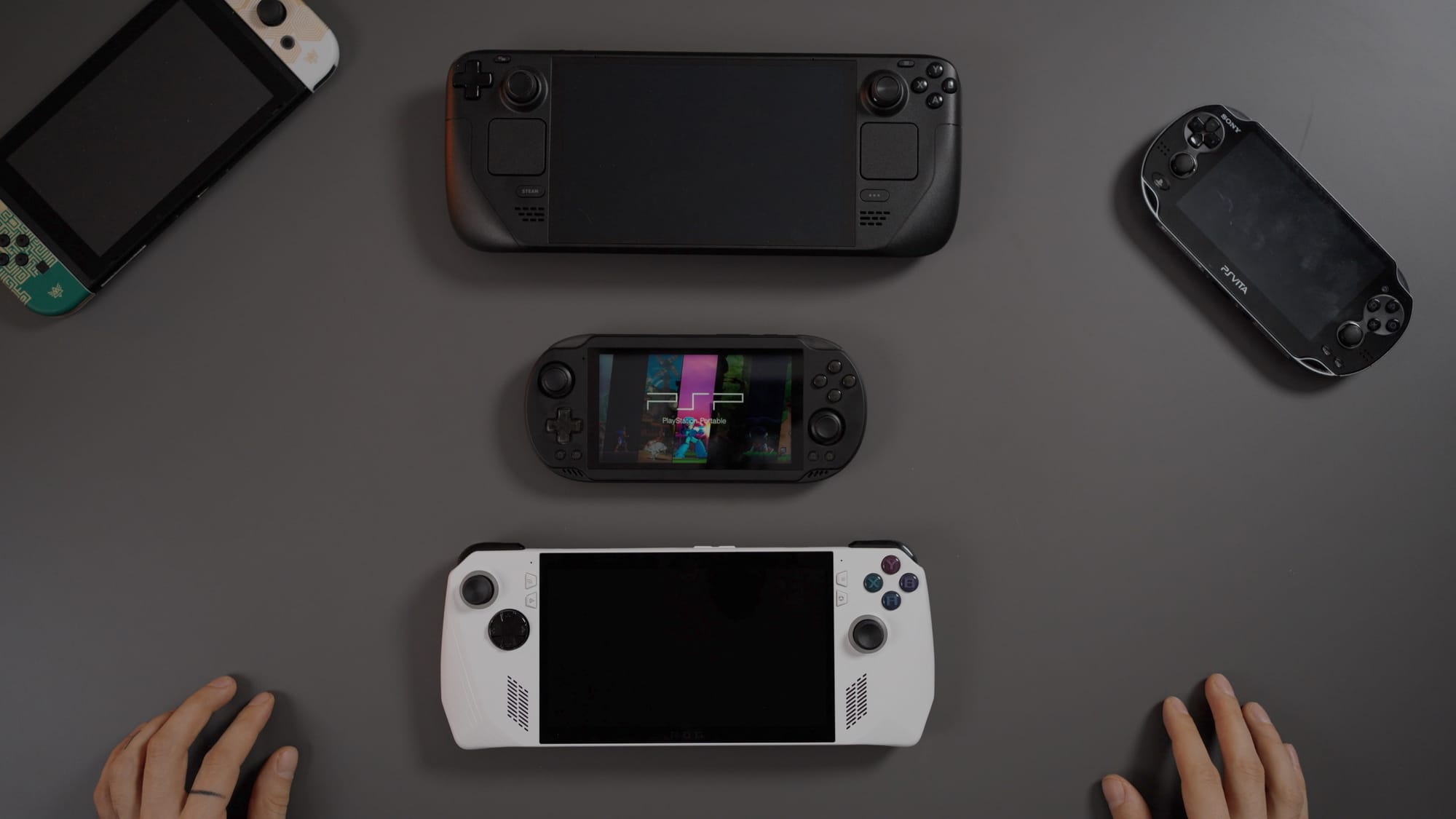
Battery-wise, thanks to its 5000mah battery, I saw around 3 to 5 hours of playtime, depending, of course, on what game I played. For example, in God of War 2 for PlayStation 2 in NetherSX2, I had around 75% of my battery after one hour.
While the larger Odin2 has a much bigger battery at 8000mah, I think this is decent. It’s not great, but it’s good. It also charges very quickly.
However, one thing I’ve realized. What seems to be sucking the most battery on the Mini is that screen. Setting it to max brightness kills the battery much faster than it would on other devices. It looks like that MiniLED is power-hungry. It’s also very bright. I used it at home mostly at 5% brightness and that’s more than enough for nearly every use case.
Emulation Champ
We need to get one thing out of the way: I hate Android. I don’t drive an Android device daily, neither one of the Android handhelds I own nor any smartphone. I’m an iPhone guy, but every time I need to set up one of these Android-based devices, I’m frustrated.
I spent around 5 hours setting up the Odin2 Mini (as shown in the video), with EmulationStation-DE as the launcher, a quick way to open Android apps via the notification tray, and a completely set-up installation of all the emulators I care about.
Thankfully there’s this fantastic video guide by friend of overkill Russ, which is an hour long, and the corresponding text guide, which is even longer, But I think without that resource, I would just have given up.
Now, there’s also another way. By using the desktop version of EmuDeck, you can just automate around 80% of what I did by hand, but apparently, I like pain and suffering because I didn’t do that. I propose you do this, though. Really. Save yourself from all this madness. Freaking Android.
However, when the Odin2 Mini is completely set up, the experience is fantastic. Everything works. EmulationStation-DE is now my go-to launcher and has access to my Android apps. All ROMs (I legally acquired, don't sue me!) have box art and open in the different standalone emulators I carefully set up.
Basically, every game I throw at it works. The only times where I felt some hiccups, I simply fixed performance by enabling a higher power profile, which you can do by swiping down on the notification tray, and then clicking the corresponding tile.
I tested different Pokémon rom hacks, and they obviously work since they even run on a potato.

I also obviously tested different PS Vita games. While Vita3k for Android is still very much a work in progress, games like Gravity Rush ran mostly without hiccups and at double the resolution. There were just some graphical artefacts here and there.
I’ve also tested PS2 and GameCube emulation, which is where some of these Android-based emulators usually fail. But the Odin2 Mini chomped through it like it had no right to, and that upscaled to a 1080p resolution.
By the way, if you want to see what games are supported, on the OdinHandheld subreddit, you‘ll find a spreadsheet that lists all the games tested by the community so far and whether they work on the Odin2. Since both AYN devices are basically the same performance-wise, the games tested on the Odin 2 should work on this new Mini, too.
I’ve also tested this one game from that one platform, where you play a blonde guy with pointy ears trying to rescue a blonde princess with pointy ears who is lost in time while fighting this big bad guy, and... I must say, I wasn’t expecting how well this runs.
Seriously. A stable 30FPS in the overworld. Close to no hiccups, except shader compilation and the occasional stutter. It just runs. No Tears in the Kingdom.
Also, because you might be wondering. Since Yuzu has officially been nuked by ninja lawyers, you either need to have a copy of the Android file yourself or find one online in a trusting backup repository. So while newer games might just not work on Yuzu anymore, games like that one game had been fairly optimized before it got nuked.
Native Android and Streaming
But I didn’t use this device only for emulation. Since it’s basically an Android tablet with an attached controller, you can easily play any of the Android games available.
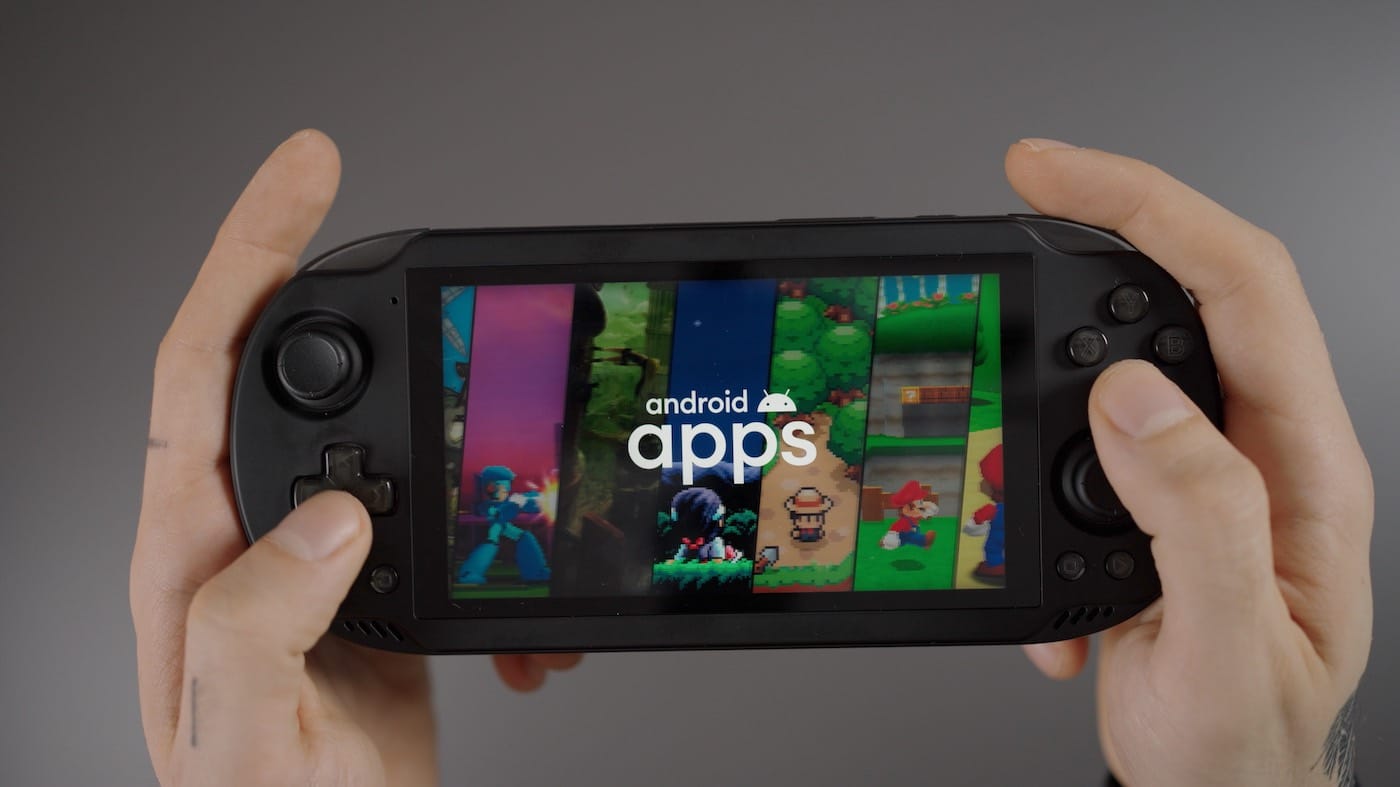
Not all games support controllers, though. Thankfully, AYN has shipped software that lets you map the hardware buttons to on-screen touch controls.
Thanks to Android, you can also use apps like PSPlay to stream your PS5 games, apps like Moonlight to Stream your PC games library, or apps like GeForce Now to stream games from the cloud, which is something I’ve done quite a lot, to be honest. I'm very much a big fan of GeForce Now for all these different handhelds, and while I wouldn’t play something like Age of Empires IV on this, the experience is still great (although maybe a bit small?) for every other game that has controller support.
And yes, I played Hades II like that. I seriously want a native port now.
Odin2 Mini: Our take
So who is the Odin2 Mini for? First things first: If you own an Odin2, the Mini is probably not for you. It is, after all, nearly the same device. It has the same chipset, it comes with the same software based on Android 13, and even when you boot the Mini, it says Odin2. The only major differences are its screen, its reduced form factor, and, well, its price.
So, if you own an Odin2 and are not rich or specifically looking for a smaller device, I think you can pass on this.
But if you don’t own an Odin2 or simply don’t care about what I just said, this device might be one of the best handhelds I've seen in a long time.
From its PS Vita inspired shape, to its screen, to its performance and support from third-party developers, it doesn’t matter how many hours I spent with it, I just can’t tire of this device.
Of course, as I mentioned previously, I dislike Android and how cumbersome it is to set up. Then again, all Android devices share this problem, and thanks to the efforts by the team behind EmuDeck, it might just become less of a problem in the future. However, I still can’t forget the whole day I spent setting this device up to make it perfect.
It is also an expensive device. $399 for the Pro model is firmly in Steam Deck territory. The Steam Deck can do much, much more and has far better support than the Odin line-up.
To be honest, since the introduction of the Steam Deck, all of these smaller handheld shops have a much harder job convincing us to get one of their devices compared to Valve’s attention-grabbing handheld.
But I’ll say it like this. Since getting the Odin2 Mini, I haven’t touched either the Steam Deck, the ROG Ally, or any of the other handhelds I own.
To me, the Odin2 Mini might just be the perfect balance between size, performance, design, and ease of use (beyond having spent a frustrating day setting it up, of course), and that’s despite its high price. If you can look past a potentially frustrating effort in getting things set up, there's a lot to like here. I can clearly recommend it.
I think this might be able to take the spot of the Vita as one of my favourite handhelds.



